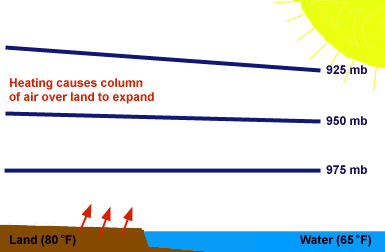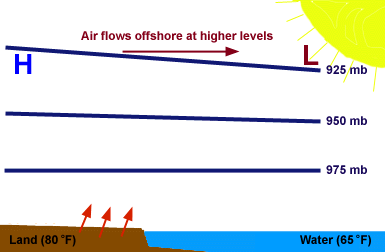Since warm air is less dense than cool air, the air over land expands in response to heating from the ground below. This expansion leads to an increase in the distance, or "thickness", between constant pressure surfaces within the heated air. Over water, where the air is heated very little, such expansion does not occur and the distance between pressure surfaces remains about the same.

In response to continued heating, an area of high pressure (blue "H") develops at higher levels over land while an area of low pressure (red "L") develops over water.

The resulting pressure gradient force causes air at higher levels to flow offshore (from high to low pressure).

surface heating |
|

circulations |